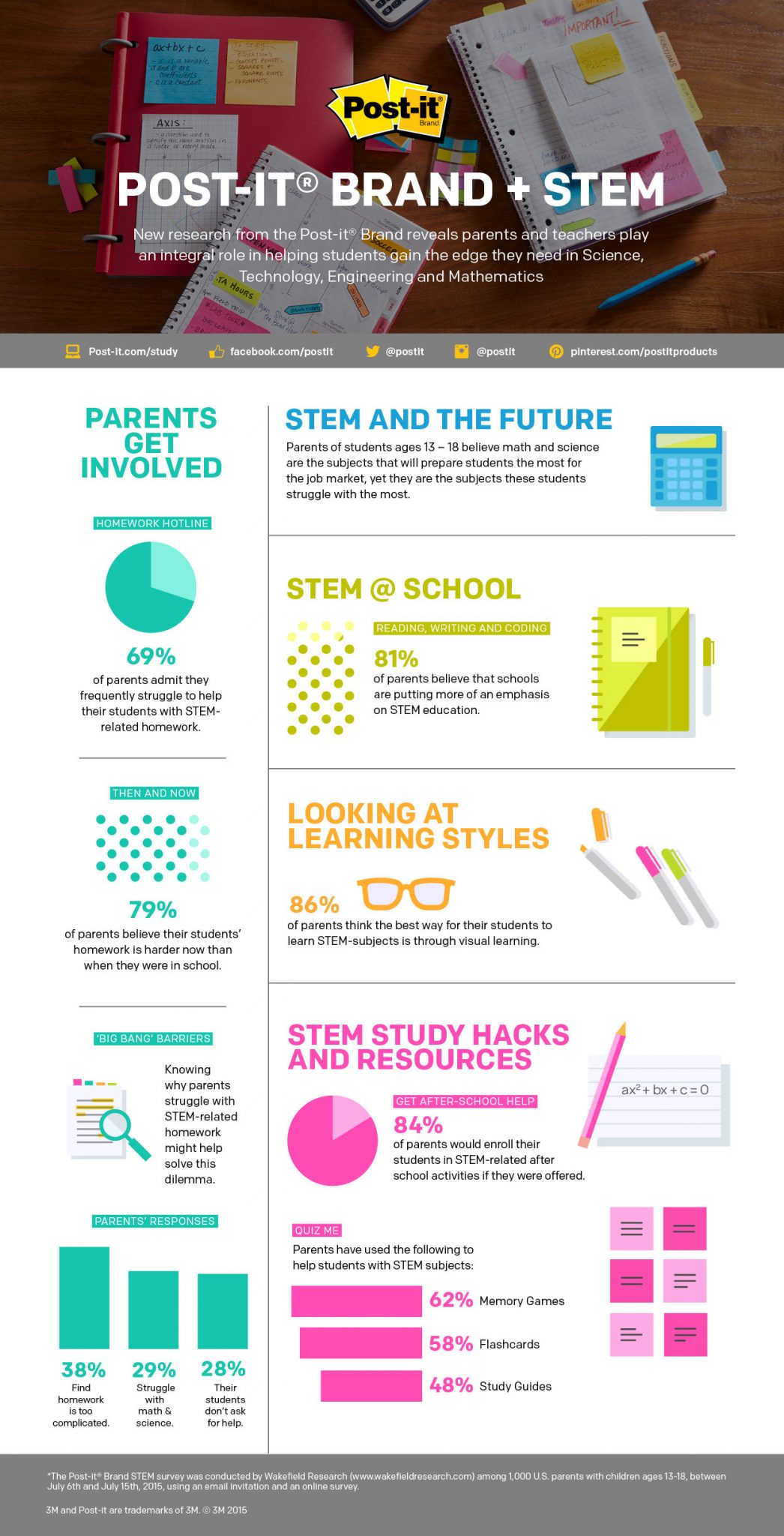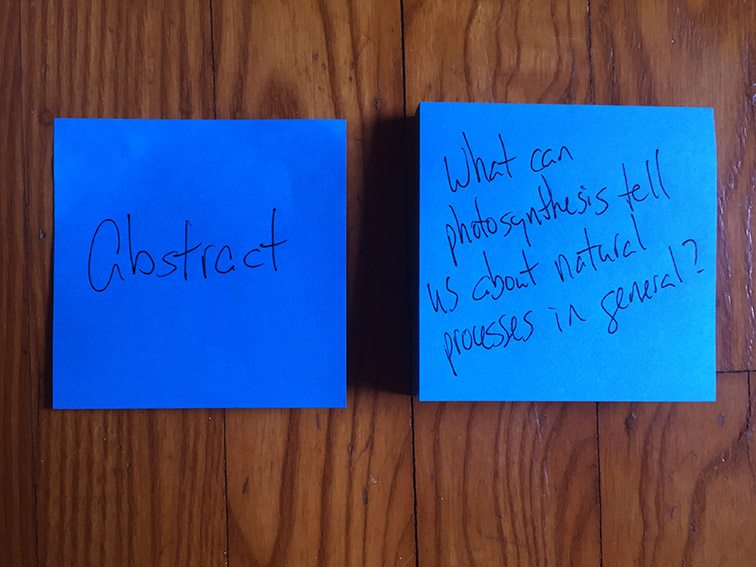
Using Post-it® Super Sticky Notes to Promote STEM Critical Thinking
by TeachThought Staff
We were recently contacted by Post-it® Brand to see if we could help teachers understand how Post-it Products could be used to promote critical thinking. The result is the strategy below. This is a sponsored post.
Recently we talked about how teaching and learning in the STEM (Science, Technology, Engineering, and Math) fields can benefit from new approaches in pedagogy. And not ironically, we also called for a new push for truly teaching kids to think critically.
According to a recent Back-to-School STEM Research Study conducted by the Post-it® Brand, 62% of parents have used memory games to help their students with STEM subjects. They’ve also used flashcards (58%), study guides (48%) and note taking (41%). One takeaway? Taking a diverse approach to how we teach–and how students learn–might be worth taking a closer look at, especially in the STEM content areas. STEM is ripe with complexity, nuance, alien ideas, and emerging trends that will topple existing paradigms and for us to reconceive preconceived notions students have about the world.
We previously suggested Concept Attainment as a useful teaching strategy to provide students with a more full and contextual meaning for these kinds of concepts and ideas. Below, we look at another way to promote critical thinking using Post-it® Super Sticky Notes from the Post-it® Brand World of Color, Rio de Janeiro collection. The goal of this activity is to promote metacognition, specifically helping students understand how to ask better questions but providing a basic framework of tiering through four levels.
A Step-By-Step Process For Promoting Critical Thinking Using Post-it® Super Sticky Notes
Step 1. Choose a standard and a topic.
For our example, we’ve selected from the Next Generation Science Standards, HS-LS2-5. Develop a model to illustrate the role of photosynthesis and cellular respiration in the cycling of carbon among the biosphere, atmosphere, hydrosphere, and geosphere. (NGSS)
From this standard, we chose photosynthesis.
Step 2. Brainstorm questions around the topic.
Next, students will brainstorm questions around that topic. Simply explain to the students that they are to ask questions about the topic–things that confuse them or make them curious, for starters. Depending on the grade and ability level of the students, you may encourage them to ask “good questions,” but doing so may paralyze their thinking as they strive to “perform” rather than demonstrate curiosity.
Step 3. Introduce!
In step 3, students will be introduced to the idea of “levels” of questions. Identify these “levels” of questions by color coding using Post-it® Super Sticky Notes from the Post-it® Brand World of Color, Rio de Janeiro collection. Explain that Simple questions aren’t inherently “bad,” nor are “Abstract” questions “good.” Different kinds of questions serve different purposes, and oftentimes asking and answering the less complex questions can lead to more complex thinking.
We can’t ask great questions about things we don’t understand!
Pink Post-it® Super Sticky Notes = Simple questions: Usually “closed” questions with one answer, based on facts and “nuggets” of information and data. Often begin with “What…”, “Which…” “Where…” and “When….”
Yellow Post-it® Super Sticky Notes = Average questions: These questions may be open-ended or closed, and may require connecting multiple information points. Often begin with “How…” and “Why…”
Green Post-it® Super Sticky Notes = Complex questions: At this level, questions are always open-ended, and answering them requires in-depth explanations, as well as predicting, inferring, and deductive reasoning.
Blue Post-it® Super Sticky Notes = Abstract questions: At the most complex, questions are open-ended, but require extended thinking and explanation. It is often necessary to answer these kinds of questions with advanced media forms (documentaries, music, poetry, blogs, books, etc.) They also require a transfer of thinking or understanding, as shown in the example below.
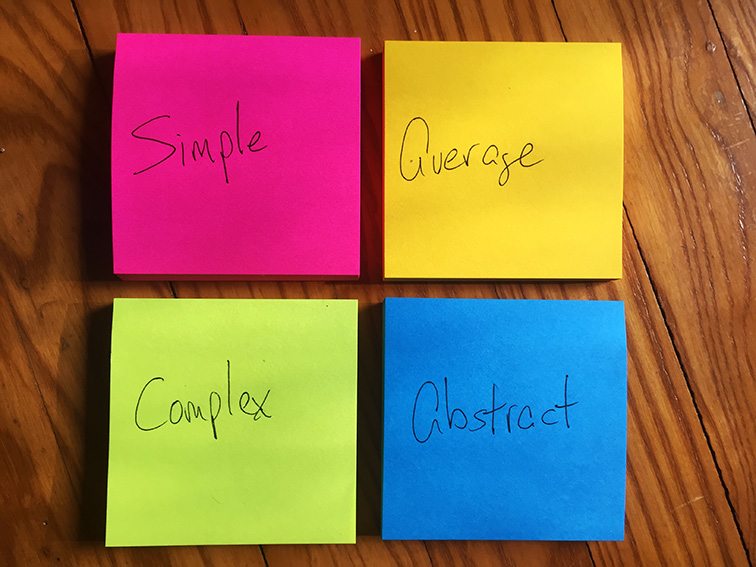
Step 4: Categorize!
In step 4, students will categorize their questions brainstormed in step 2, and write them on the respective color Post-it® Super Sticky Note.
You may need to model the differences in the questions, ideally providing multiple examples for each, and maybe allowing students with advanced understanding the chance to come up with their own example, quickly and on the fly.
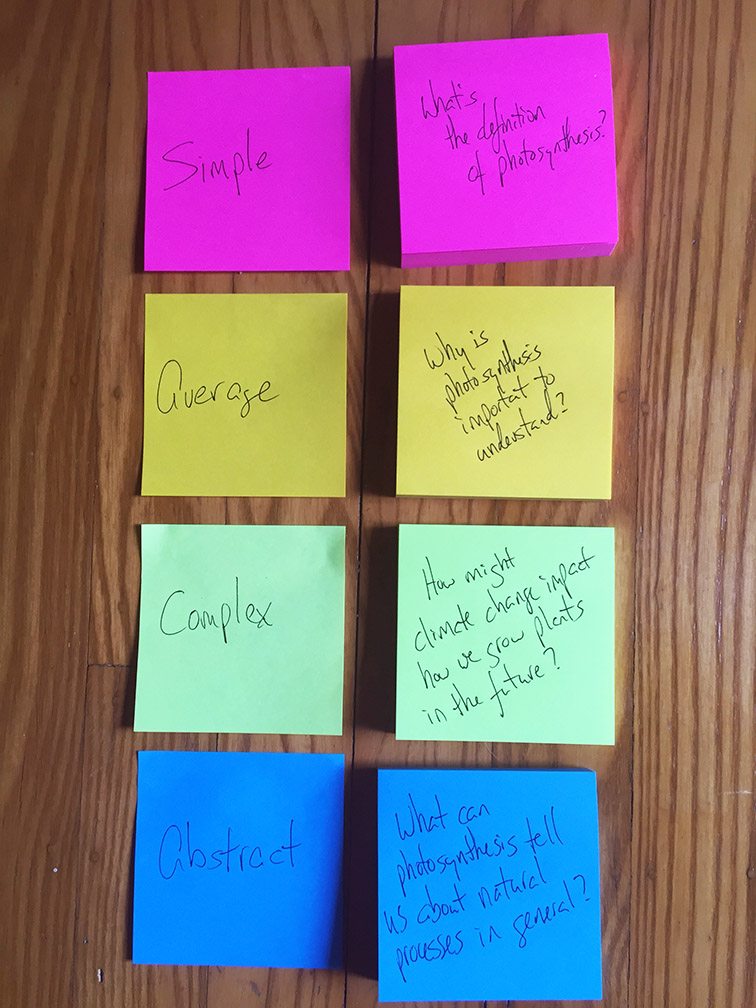
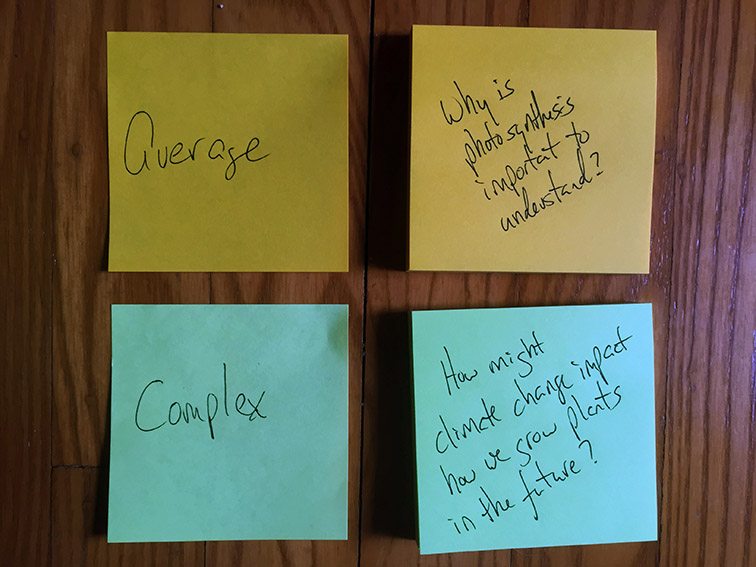
- Refine!
In this final step, students will refine their questions on different colored Post-it® Super Sticky Notes by doing the following:
- Making sure they have at least 8 questions.
- Revising those 8 (or more) questions to either fit one of the categories precisely or…
- Change the color of the Post-it® Super Sticky Note category to accurately reflect the correct question category.
Variations
The big idea of this Post-it® Super Sticky Note activity is to promote critical thinking by helping students see questions in terms of levels and fluidity–from simple to abstract, and capable of changing based on learning and understanding.
A few variations are possible:
- Have students categorize questions you provide on corresponding colored Post-it® Super Sticky Notes. This helps them focus on the categories without having to develop the questions. This can be a differentiation point for students in the process above as well.
- Have students brainstorm questions as a class, then categorize in groups of students based on category and color on Post-it® Super Sticky Notes.
- Use a write-around strategy so students can ask questions in writing while building off one another’s thinking.
- Create “distractor” Post-it® Super Sticky Notes that are incorrectly categorized, and have students correct the level by changing the color or revising the question.
How do you help students learn and understand complex STEM concepts?
More Information
For additional information on Post-it products, or to purchase, visit Post-it.com
For more information on how to help students excel in STEM education visit the Post-it® Brand website. You can also connect with Post-it® Brand on Twitter, Facebook, Pinterest and Instagram.
